As a top digital design and branding agency, Bluetext is familiar with the common client concern, “how can I tell my company’s story with data?”. Recent studies have shown that consumers follow directions and digest information with text and illustration over 300% better than when presented solely with text. It’s true; a picture can tell 1,000 words — and often better. Infographics, statistics, charts, and data visualization design can seem daunting. Whether working with complex or diverse data sets, the design process can often feel overwhelming and messy. Bluetext sat down with our veteran Design Lead, Augusto Pagliarini, to discuss the do’s and don’ts for creating captivating infographics that speak louder than words.
At Bluetext, upon receiving a creative brief, user experience designers dig to research and assess the UX best practices. When designers work with project managers, they like to review research –which is leveraged to show the client examples and directions that might inspire our infographic. This could, for instance, include exploring two options, to see how we can show their data in a multitude of interesting ways.
For research, some of the preferred design resources include Adobe’s Behance, Dribbble, and Pinterest. These websites are great places to discover good layout inspiration and to see what is trending in the design world.
Infographic design is both an art and data science. One of the most important steps in the creative process is wiring and sketching out the infographic, rather than jumping straight into color. Bluetext design best practices start with a sketch to get the client’s reaction. Graphic designers will draw shapes and lines, all with pen and paper. Efficiency is king, it can be a waste of time to create initial sketches in a high-fidelity format such as XD.
Bluetext is a data-driven agency- so our primary focus is looking at the data first, then designing around it. The next step typically involves using Adobe Illustrator, which allows for creating a vector format. These designs allow for infinitely scalable vectors, so our user experience design team can swap out sizes with relative ease.
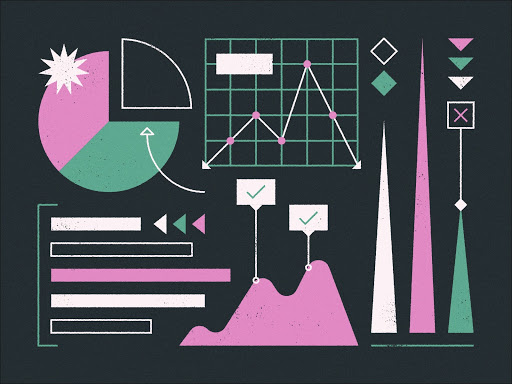
It’s important to know the end-user and the audience. User personas are the base of creative style and direction. Some questions our team considers are should the infographic be playful, or serious in tone? More illustrations, 3D isometric style, or photo-realistic? When it comes to the high fidelity designs, our design team considers if the infographics need to use the client’s branding, working off a set style guide to avoid common pitfalls in infographic design such as using too many fonts and colors. Another key focus is on accessibility– all audiences need to be able to read these items, so a lot of thought is put in at the frontend of the design process to make sure it’s legible, and that the data flows well.
It’s critical to cite your sources and ensure that the design allows for that. This enables our clients to showcase their credibility – whether it be in disclaimer text or link if it is a digital asset.
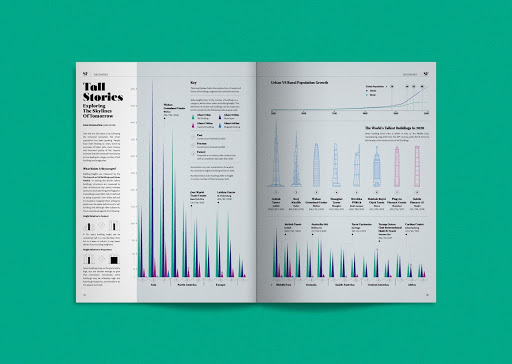
Top Tips to Follow:
- Know your audience and end goal
- Keep design simple
- Show, don’t tell
- Follow style and brand guidelines (where appropriate)
- Do your research!
Faux Pas to Avoid:
- Overcomplicating things
- Designs that are hard to read or follow
- Having no flow or hierarchy
- Hierarchy: In this sense, it is guiding users on what to look at first, what are the supporting points of the infographic, are there too many colors that catch my eye?
- Having no flow or hierarchy
- Too much variety in colors, fonts, and textures
- Too many colors, fonts, and treatments create a lack of uniformity in the entire design. Sticking to a style guide can keep infographics digestible and visually appealing.
When building and launching digital campaigns, many of the key determinants of success are evaluated through digital engagement measurement and tracking. However, as websites and ad-tech have evolved in recent years, so have protections and privacy policies. It’s easy to write off the need for a comprehensive privacy policy, however, this is a recipe for disaster in the age of big data regulation and enforcement. To avoid the FTC and International regulators ire, digital agencies such as Bluetext recommend taking data privacy measures that cater to the most comprehensive regulations in effect.
For businesses with users outside of the United States, being aware of the General Data Protection Regulation (GDPR) and similar legislation is an essential consideration. The GDPR has created strict provisions for EU web users’ privacy and data rights, which extends to US browsers. As global privacy legislation evolves, North American businesses that handle global users’ data must comply with current regulations and build with an eye on future compliance. Top digital marketing agencies advise and design campaigns and websites with these policies in mind to provide frictionless engagements.
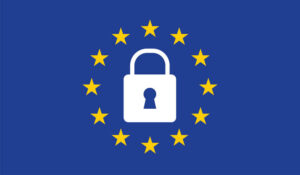
What is the GDPR?
The GDPR is an extraterritorial set of provisions that updated Europe’s data protection standards. The privacy policy strengthens the protections set in 1995, adding requirements for greater transparency and disclosure to users, in addition to modernizing the “cookie law” of 2002.
The GDPR goes beyond earlier regulation, focusing on personal data protection regardless of the type of data and how companies must document user consent in a transparent fashion. These protections apply to all persons browsing within or originating from the European Union.
The term “personal data” is not synonymous with “personally identifiable information”, or PII. PII has traditionally been a legal concern for American businesses, and it refers to a more defined set of information than the GDPR model. PII does not have to be context-specific to be regulated, in contrast, the GDPR emphasizes the consumer risks of data aggregation.
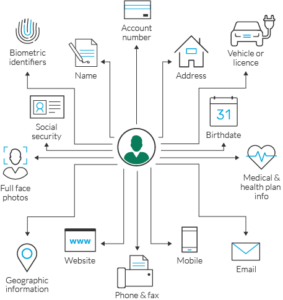
My business isn’t located in Europe, why should I care?
The GDPR’s reach is far greater than the medley of privacy protections in effect across the United States. Violators of the regulations risk penalties of €20 million ($22.6 million as of writing) or 4 percent of global annual revenues for the preceding fiscal year, whichever is greater. Comprehensive legislation at the state level in the U.S. has been varied, many forward-thinking businesses are beginning to take steps to adapt their practices to comply with the California Consumer Privacy Act (CCPA). Ultimately every website will have to comply with some set of standards, so it is wise to be proactive and implement privacy protection now. Top digital marketing agencies such as Bluetext are taking steps to protect against potential violations of the CCPA and GDPR by changing cookie collection practices, recommending new data collection practices, and designing clear consent forms.
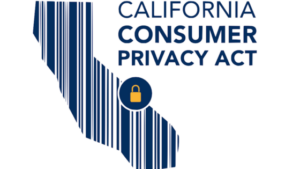
Changing privacy policies impact sites from the bottom up, starting with development and design
In a digital-first world, data is a critical component of many businesses online and offline strategies. With the implementation of the GDPR, marketers and web developers must be more diligent about what data we collect, the means by which we collect it, and how we handle sensitive information. When building or updating websites, web developers, and digital project managers should take this as an opportunity to rethink how sites can be more transparent and adopt the Privacy by Design framework.

The Privacy by Design framework highlights design-thinking approaches to development prior to launch to eliminate the need for post-hoc privacy fixes once a project is live. Solutions such as making privacy the default setting for site visitors, making privacy standards visible and open, and giving users specific privacy information notices are easy considerations to add to the development plan.
If your site is already live, consider a development sprint focused on auditing areas of potential weakness. In assessing your data hygiene, your team can look for unsafe or unnecessary modules that can be disabled, particularly those found in APIs and third-party libraries. Adtech integrations may help source leads and retarget with better precision, but validating that their pixels and tracking are in alignment with GDPR best practices is essential.

The aesthetic design of websites is also impacted by changing privacy practices. GDPR consent requires clear and explicit opt-in notices to users. Designers, user experience experts, and marketers should work collaboratively to update existing landing page components to incorporate new disclosure features. One simple mantra to internalize in the design phase? Offer accessible, clean choices around cookies and pixels.
When building clear user permissions for data capture, the GDPR requires that websites define data retention and deletion plans for all the personal data collected. Adding GDPR conscious logic to scripts at the code level of your site can save time for site custodians and business analysts alike in the future.
Updating best practices for common marketing tactics and tools
Updating the fine print on your Privacy Policy is just the first step of complying with new regulations; common marketing campaign tactics such as cookies should also be rethought through the lens of compliance. Cookies are the small data files that can be placed on users’ browsers and provide a trove of useful insight to website operators. Under the GDPR, businesses are legally liable for any activities on their sites, specifically protecting user data from third-party cookie tracking.

Many businesses use cookie tracking to better measure the impact of their marketing strategies, and they combine tracking with other user data to build user personas. While this has been an accepted practice in the past, the new regulation now requires clear permission from European users to collect this information, whether the site is for an American or French company. As noted in the impact of GDPR on design, cookie usage has to be explained on either the homepage or a second-level page on the navigation. This immediate opt-in should allow users to understand how their data is collected, the purpose of the data, and how long they are consenting to these cookies.
As a website operator, sites must withhold all cookies and trackers on your website until you have received clear and explicit user consent on each type of cookie and tracker. This consent has to be given freely, described in explicit plain language, and users must have the ability to withdraw consent. The rights of users under the GDPR are extensive — to comply, website custodians must update their privacy policies and opt-in tools.
This sounds like a lot of work, why should I care?
Ultimately, thoughtful privacy policies, development, and design provide a safeguard for both businesses and users. The GDPR gives consumers new rights to access and manage their data on digital platforms, and businesses that do not adapt to meet these regulatory requirements can face steep fines. While these changes can seem overwhelming, a top digital marketing agency such as Bluetext can guide your business through the murkiness of data privacy design and compliance.
Have you ever found yourself on a website, staring blankly at the screen wondering where the rest of the pages are? Navigation is one of the most important functions of any web page whether it be a blog, product listing page, about section, or a document library. If your user doesn’t know where this content is housed, the utility of the information is lost! As a crucial element of user experience, failing to build smart navigation into your digital interface can lead to a variety of issues including secondary UX issues, accessibility problems, and increased bounce rates from frustrated users.
Let’s take a step back; what is a navigation menu, and do I still need one if I have “search”?
Navigation menus are maps of the categories or features of your content; on websites, these are known as sitemaps. These menus can appear in a variety of ways; from the traditional header locked navigation bar, to hamburger menus that pop out to link to various interior pages of a website.
While many websites have a Search function of some kind, whether it be a search bar or filter, research shows that 70% of users rely on navigating to content directly. While search features are helpful to some users, navigation menus can lead your visitors to the content they need quickly and reliably.
No matter where you are with your website, here are some quick, easy tips to help you optimize your platform for a better user experience.
1. The 3 Click Rule
Your navigation structure should be intuitive and allow users to land on any page and find what they are looking for in 3 clicks or less.
If your site has lots of content and sub-pages that relate back to a greater unifying category, take advantage of breadcrumbs. Breadcrumbs are a component of navigation menus that help users orient themselves within a sitemap. They can be embedded into the navigation bar as a dropdown, or appear in the design of the child pages on your site to guide users through the various layers of content.
2. Show Off Your Menu
Don’t try to reinvent the wheel-don’t hide your navigation menu! When a user visits your site, it’s likely one of the hundred other web properties that they have browsed in the last few days. As our digital lives have progressed, users have become accustomed to certain kinds of queues and user interface (UI) elements. Keep your navigation menu in an intuitive location, be that the left rail, top of the browser window, or a pop-out hamburger menu with an obvious icon.
3. State the Obvious
Be as clear and descriptive as possible. Avoid using vague descriptions in your navigation headings. If a user can’t tell exactly what to expect from a page in the navigation, there’s a chance they won’t make it past the landing page. Use descriptive language to identify what your pages contain, less is more with heading titles. Streamline the main menu display experience where possible and take advantage of dropdown menus for categories with multiple child pages. If you hyperlink to pages within your site from banners or in-line content, make your hyperlinks obvious!
4. Stay on Topic
Don’t let SEO impact your navigation taxonomy. While ranking well in search engines is important, packing your Headers and menu items with keywords that don’t relate to the page contents won’t do you any favors with users. Avoid this common pitfall by using the copy and metadata on your pages for SEO strategies, leave your headings and menu items clean and accurate for better UX.
5. Lead with a Mobile-First Mentality
Over 53% of all web traffic occurs on mobile devices. When designing your navigation menu, start by thinking about how users might visit the site; on both their computers and mobile devices. Take advantage of responsive designs that can adapt to a variety of browsers and devices rather than discovering post-launch that your navigation is broken.
6. Stop Guessing! Test Your Audience
If you’ve updated your navigation menu but still see disappointing numbers for bounce rate and click through on your site, test your experience. User behavior can be monitored with tests such as a Crazy Egg Heatmap, which illustrates where your users are browsing on the page.
TLDR: improving your navigation design can improve your relationship with users
Confusing or obscure navigation will lead to fewer visitors to your interior pages and can result in awful analytics reports. Clear and effective navigation can enhance visitors understanding of where your content is located, instill confidence in browsing your site, and create credibility about your product.
Do you need to up your navigation game but you’re not sure where to start? Get in touch with us.
Do you remember when you used to have to consult books and encyclopedias for the answers to your questions? Just over 20 years ago, you had to reference the yellow pages to find a marketing agency. Nowadays, Google is the search engine king, the go-to for 73% of searches online (and 81% of mobile search). Top marketing agencies depend on Google and it’s algorithms to direct current and potential customers to their clients’ sites via both organic and paid search.
What’s the difference between non-organic and organic (search)?
Organic search is the result of entering search terms as a single string of text into a search engine. Organic search results appear as lists that are based on relevance to the search terms and exclude advertisements; they do not filter out pay-per-click advertising. Paid search is a form of digital marketing where search engines like Google and Bing allow advertisers to show ads at the top of search engine results pages (SERPs). Paid search operates on a pay-per-click model– meaning there is no cost until someone clicks on your ad or content.
Organic traffic is widely considered the most valuable traffic source for multiple reasons:
- They are the most trusted source for people researching a purchase.
- Google’s algorithms and rankings are very sophisticated — ranking in the top five results for a keyword indicates that your content is high quality.
- Results on the first page of Google (The Top 10) receive 92% of all search traffic on Google. Traffic drops 95% on the second search page.
- 33% of clicks from organic search occur on the first listing on Google.
The downside to organic search is that it takes time to get indexed and generate traffic. Although evergreen content ranks higher than paid (time-limited) placements, the lag in rank visibility may not work for every business case.
Rev up your (search) engines with a paid approach
Besides considering how much traffic will reach a site via organic or paid search, top marketing agencies also work with their clients to enhance their performance with search engine algorithms through search engine optimization (SEO). Improving your company’s search engine optimization isn’t just about the politics of appearing first, it carries financial benefits, too — 57% of B2B marketers say SEO is the biggest factor impacting lead generation.
To optimize your site rank in the organic search results, you need to employ SEO techniques to make your page as crawlable as possible to search engine algorithms. This includes using keywords in critical real estate (headers, links) and including content that relates to those key search terms.
Paid searches are the companies that have paid to appear at the top of your search engine. Even with the little yellow disclaimer “Ad” box, many users click intuitively on these paid placements. Rather than having to wait patiently for your SEO to build up through indexing, you can pay for the chance to get seen on page one of Google immediately.
You can put your money where your mouth is, or play the long SEO game
Sometimes paid search isn’t in a company’s budget – fear not, having the deepest pocket does not ensure SEO success. Google has processes in place (quality score, copy rules, landing page quality, and more) to make sure that the ads that rank are still highly relevant for searchers. Investing substantial budget in ads or paid search will only float a company so far in the ranking algorithms if their content isn’t crafted to support these buys. In both organic and paid search, Google puts user experience first, which is why top marketing agencies such as Bluetext focus on a holistic approach to SEO, creating high-quality evergreen content that ensures both organic and paid efforts are supported through continuous search engine indexing. Digital marketing agencies are experienced at selecting organic keywords that will be both effective and realistic, and they provide support in creating a strong content base to perform in SERPs.
See how Bluetext can help improve your SEO »
What exactly is digital branding, how is it different from digital marketing, and why does it matter? These are common questions that top digital branding agencies hear from clients. Digital branding is an umbrella phrase that describes a variety of ways that companies and organizations can capture their customers’ attention online. In the digital age, having a presence and personality online is often just as business success as personal relationships.
The difference between digital marketing and branding is significant
Don’t let the similar use of digital in these terms confuse you – digital branding companies often use both terms in discussing their work, but the processes are different. Digital marketing activities are those which promote products or services based on their value proposition in an online setting. In comparison, digital branding is more nuanced. The best branding agencies promote their customers’ businesses by highlighting specific underlying characteristics and values that make their company unique. Top branding agencies take this a step further by advocating for a digital-first approach.
Take your brand online with refreshing campaigns
You can think of your company’s brand as it’s ‘personality’ and the different aspects of its personality are it’s brand assets. These brand assets typically include:
- Company Name
- Logo
- Color Schemes
- Messaging
- Slogans
- Fonts
- Advertising Methods
In an era where consumers turn to the internet for answers, positioning your company to stand out online is essential.
A company’s brand colors, fonts, logo design, and application should all be carefully curated to fit a specific personality.
The brand interactions of the previous era of marketing were one-directional: a customer might see your advertisement but wouldn’t be able to engage directly with your company through that channel. With the internet, an eye-catching digital marketing campaign can lead to conversions and a strong user engagement with memorable branding.
Digital branding by the digits
If you still aren’t sure what digital branding can do for your business, consider some key figures that illustrate the value of digital branding.
Recent studies have shown that purposeful branding significantly increases revenue. Modern consumers expect companies to have an online presence, and nearly 30% prefer to communicate with brands via digital avenues.
Because almost 50% of web searches are made from smartphones and mobile devices, companies have had to change the way they design their online presence. Top digital design and top branding agencies can transform dull contact pages stylized like Internet 1.0 websites of the 2000s into responsive and exciting digital destinations. See how Bluetext transformed Clarabridge’s digital presence with a branded video embedded into their website.
Leverage your brand awareness through ads
In 2018, more than 2.3 billion “bad ads” were taken down by Google — investing in your company’s digital marketing and branding with a top branding agency ensures your ads won’t get lost.
Branding is also becoming the go-to approach for advertising across digital platforms: A 2019 report showed that the most-used campaign type among all Facebook campaigns is Brand Awareness—55% of advertisers leverage Brand Awareness campaigns to drive impressions at a widespread and cost-efficient clip.
According to experts in the field, consistent branding across all channels increases revenue by 23%, and 89% of marketers say that building off that consistency and achieving brand awareness is their top goal.
Despite the emphasis consumers have placed on seeking out authentic brand interactions, only 60% of marketers think their brand is aligned with their long term goals. Bringing in support from a top branding agency is a surefire way to bridge this gap and polish your companies digital brand experience.
Digital branding means a versatile and flexible approach to engaging customers
Modern consumers spend their days on a variety of different media outlets and through multiple channels, which is a substantial shift in how people consumed information a decade ago. Companies need to respond by following their consumers to these new platforms to maintain visibility and relevance. As interactions increasingly move online, brands must adopt a digital-first approach.